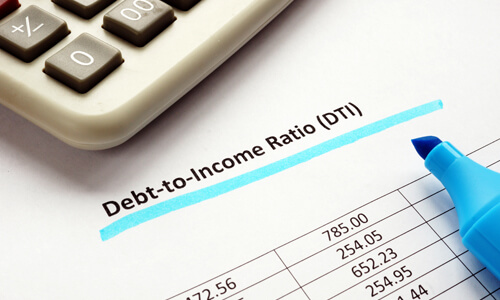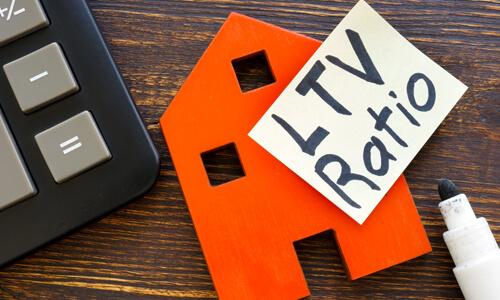Once in the homebuying market, it’s smart to educate yourself on various mortgage options. Going in, you probably understand the difference between fixed-rate mortgages and adjustable-rate mortgages (ARMs). However, you may be unfamiliar with a piggyback mortgage. This is actually a mortgage structure made up of two loans taken out at the same time: a first mortgage and a second mortgage, either in the form of a home equity line of credit (HELOC) or a home equity loan.
Piggyback mortgages are also called combination mortgages and simultaneous mortgages, and they can help certain borrowers buy the home of their dreams.
When are piggyback mortgages used?
The most common reason a borrower opts for a piggyback mortgage is because they don’t have a down payment equal to 20% of their home purchase price. This means their mortgage loan-to-value (LTV) ratio would be greater than 80%, and they’d be required to pay for private mortgage insurance (PMI), a policy that protects the lender if the borrower defaults on their loan.
Some borrowers also use piggyback mortgages to avoid jumbo loans, which come with stricter qualification requirements per the federal government.
How does a piggyback mortgage work?
The typical piggyback mortgage comes in an 80/10/10 structure that breaks down as follows:
- 80% of the home purchase price is covered by your first mortgage
- 10% comes from a second mortgage, most often a HELOC
- 10% is paid for with your down payment
Let’s say you want to buy a $400,000 home but don’t have $80,000 (20% of $400,000) to put down in order to have an LTV of at least 80%. With a piggyback structure, you’d get a mortgage for $320,000 for an LTV of 80% ($320,000 divided by $400,000). Additionally, you’d take out $40,000, which is 10% of $400,000, in a second mortgage. You’d supply the final $40,000, or 10%, with your down payment.
Some lenders offer other combinations of piggyback mortgages, such as 80/15/5 and 75/15/10.
What are the biggest pros and cons to piggyback mortgages?
As with any financial decision, it’s best to weigh the pros and cons before moving forward.
Piggyback mortgage pros include these:
- No PMI: The average cost of PMI is 1% of the loan amount per year. For a $360,000 mortgage, that amounts to $3,600 a year or $300 added onto your monthly mortgage payment. In some cases, PMI can go as high as 1.5%, increasing your added cost to $450 a month.
- Lower down payment threshold: You don’t need to save quite as much to buy a home.
- Lower first mortgage interest rate: Lenders typically offer lower rates when you put down 20% or more.
- Convenient and more affordable future credit source: Although your HELOC is maxed to its limit at the start of your piggyback mortgage, as you begin to pay it off, you’ll gain access to a flexible credit source that has a lower interest rate than a credit card.
- No extra requirements for a jumbo loan: You avoid the additional hoops required for the highest-dollar mortgages.
Piggyback mortgage cons include these:
- Two of everything: You incur closing costs for each loan, must sign documents at two closings and will have two monthly payments, one for your primary mortgage and one for the HELOC.
- Second mortgage interest rates: HELOC rates are priced higher than mortgages and are typically adjustable, meaning your monthly HELOC payment could go up in response to fed rate changes.
- Qualification hurdles: You’re applying for two loans at the same time, and lenders will want to make sure you’re able to repay both before approving you.
- Refinancing complications: Unless you pay off your HELOC when you refinance, you’ll need your HELOC lender to sign a loan subordination agreement so that your refinanced mortgage takes the first lien position rather than your HELOC.
In some cases, the additional closing costs and the HELOC’s interest rate can make a piggyback mortgage more expensive than the cost of PMI. A loan officer can help you estimate and compare the cost of both scenarios.
How do you apply for a piggyback mortgage?
If you think you might benefit from a piggyback mortgage, start discussing this option when you contact a bank or credit union about getting pre-approved for a mortgage to find out if it allows this structure. When permitted, some lenders offer piggyback mortgages directly, meaning they would let you apply for both your first mortgage and HELOC through them.
In some cases, you’ll need to use a different lender for the HELOC. Your first mortgage lender may offer suggestions for companies offering HELOCS in piggyback situations and might even help coordinate the overall process.
Tips for Qualifying for a Piggyback Mortgage
These financial hacks will improve the chance you can qualify for a first mortgage and a HELOC at the same time:
- Maintaining steady employment to help prove your ability to repay both loans
- Improving your credit score by paying everything on time and not applying for any other new credit
- Shrinking your credit card debt and repaying as much as possible of your student loans to reduce your debt-to-income (DTI) ratio to 36% or less.
Ultimately, building and sticking to a budget is the key to achieving those last two hacks.






Comments Section
Please note: Comments are not monitored for member servicing inquiries and will not be published. If you have a question or comment about a Quorum product or account, please visit quorumfcu.org to submit a query with our Member Service Team. Thank you.